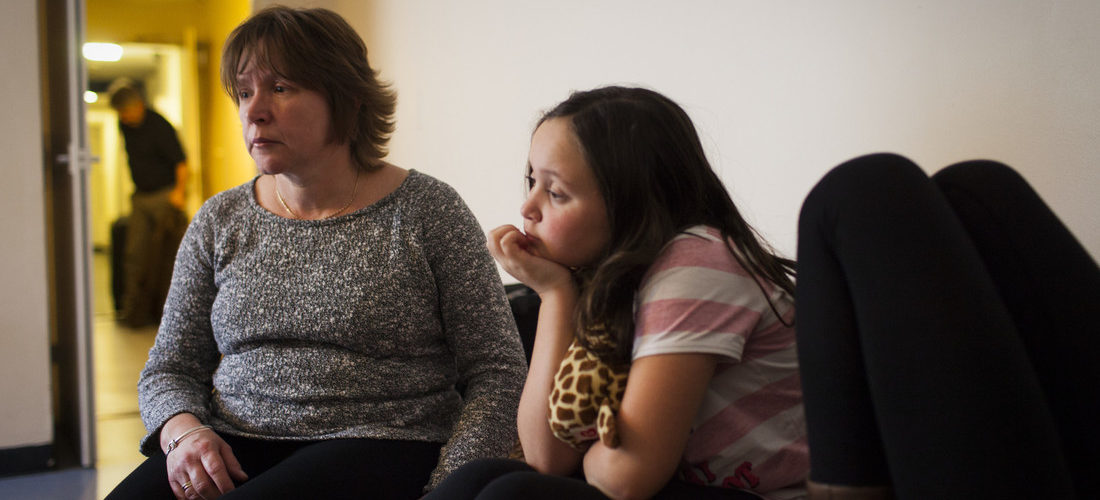Amanda* is heading out onto a windy Edinburgh street, children in tow, to buy a takeaway for dinner: the bedroom they’re sharing doesn’t have any cooking facilities. She’s been in a Premier Inn with her kids for two weeks, after she was evicted because her benefits didn’t cover the rent. As Amanda and her family have made a homeless application, they will show up in the Government’s homelessness statistics.
Gary* has been staying on a friend’s sofa since his house burnt down. He says the council told him he wouldn’t be found homeless, because he didn’t respond to letters for rent arrears – letters that were sent to his burnt-out house. As Gary didn’t get to the stage of making a homeless application, he won’t appear in the Government’s homelessness statistics. But he is, by definition, legally homeless.
Every June, the Scottish Government releases a set of statistics showing how many households applied as homeless over the past year, and a whole spreadsheet of information about those people. This statistical release contains a real wealth of information, but as the case studies above show, it can only record people who formally seek help when they find themselves homeless. Others like Gary, despite meeting the legal definition of homelessness, will never be recorded so their experiences will never be known.
Statistics may not excite everyone but if you’re a stats-lover like me, that spreadsheet is an incredible mine of information.
And what do all those stats show? The short answer is: too much for this blog. The long answer is the 40-page report we have published today which drills down on some of the key findings contained within the statistics.
But essentially, these stats show trends.
By analysing the statistics, we can see whether the progressive laws we like to shout about in Scotland are actually working in practice. Are fewer people becoming homeless? How are they engaging with the services that are there to support them? Are particular areas faring better than others? If you want comprehensive answers to these questions, please read our report – we’d love to hear what you think. But as a taster, here’s some interesting highlights we’ve pulled out:
- For the first time in 9 years, homelessness is on the rise – 34,972 households made a homeless application in 2017-18. This included 14,075 children.
- 10,933 households were in temporary accommodation on 31st March 2018, including 6,615 children, and we know that on average households with children spend over 6 months there.
- Both the number of households and the number of children in temporary accommodation have increased for the fourth year running – households like Amanda and her family.
- There is a huge problem with councils losing contact with people who are seeking assistance with housing issues: councils lost contact with 1 in 5 households who asked for advice with their housing, and 1 in 7 households who made a homeless application.
- More and more people who are homeless have support needs such as mental health needs or medical conditions: 47% and rising.
- Certain groups are persistently overrepresented in homelessness statistics; young people, prison leavers, care leavers, and former members of the armed forces.
- 1 in every 16 households who are assessed as homeless have already applied as homeless before in the same year. Clearly, the support they received first time around wasn’t sufficient.
I have spent months pouring over this data, analysing and making graphs. The findings are fascinating but it is important to remember that there are real people behind every single one of those figures. People with stories of an often unnecessary struggle. The numbers are important, but we don’t do justice to that importance if we forget the very personal stories those numbers represent. And people like Gary don’t even make it into my pie charts, let alone into a permanent home.
Progress has been made on the complex issue(s) of homelessness in Scotland over the past few years; a huge number of people work tirelessly in councils, housing associations, charities and other statutory bodies to deliver on our world leading homelessness legislation. Yet the picture this report paints is that there is much to do to make sure we are getting it right for the 28,792 who were made homeless last year. At Shelter Scotland we strongly believe that we need to work better to prevent homelessness wherever possible and when it does happen, we need a strong, robust safety net that helps people move away from homelessness as quickly as possible, for good.
*Names have been changed.


